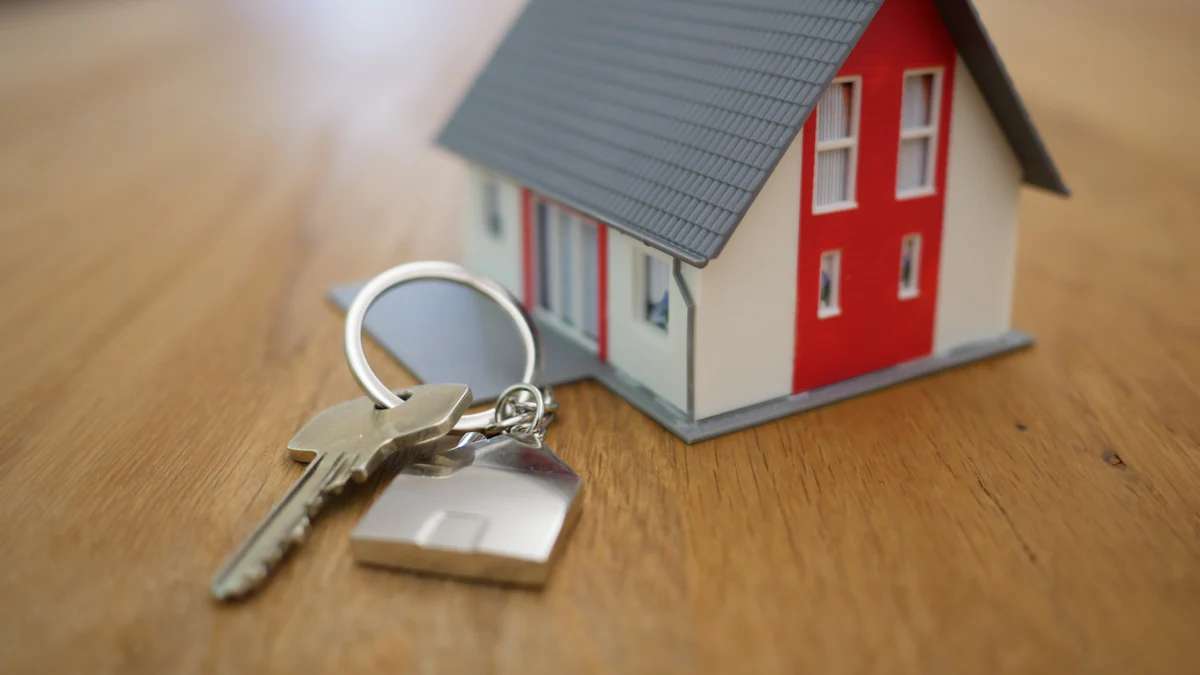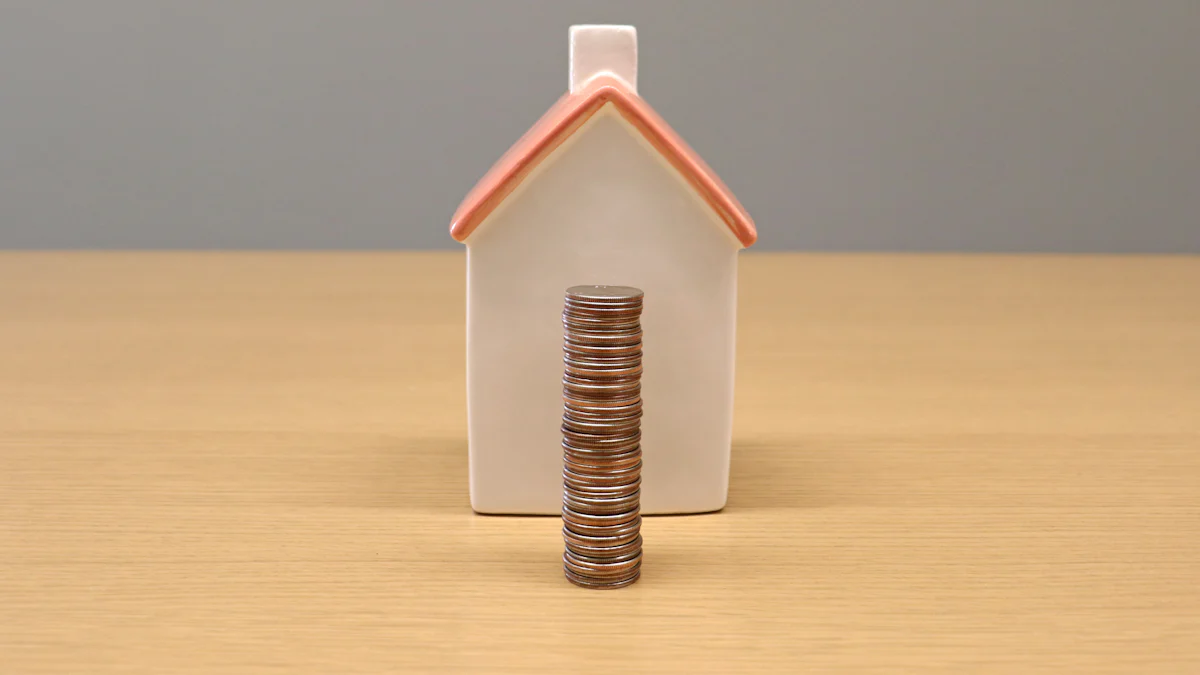How to Save for a Down Payment on a House Faster

Saving for your home can feel like a huge challenge, especially when you're unsure where to start. Did you know that 26% of first-time buyers say that saving for a down payment is the hardest part of buying a house? Take a look:
Buyer Type | Percentage Finding Down Payment Most Difficult |
|---|---|
All Buyers | 13% |
First-Time Buyers | 26% |
Repeat Buyers | 7% |
But here's the good news—you can make it easier! By setting a clear savings goal and learning how to save for a down payment effectively, you'll be on your way to homeownership faster than you think.
Key Takeaways
Know how much money you need. Check home prices and loan types. Save more to lower your monthly payments.
Make a budget and spend less on extras. Watch where your money goes. Save automatically to make it simple.
Try extra jobs to earn more money. Do things like freelancing or part-time work to save faster.
Use savings accounts with good interest rates. These help your money grow faster. Set up automatic transfers to stay on track.
Look for help programs. Find programs for first-time buyers or down payment help. These can make buying a house easier.
How to Determine the Amount You Need to Save for a Down Payment
Understanding Down Payment Percentages
The first step in saving for your home is understanding how much you’ll need for a down payment. The percentage you’ll pay depends on the type of loan and whether you’re a first-time homebuyer or a repeat buyer. On average, first-time buyers put down 8%, while repeat buyers typically pay 19%. Here’s what that looks like for a $400,000 home:
Buyer Type | Average Down Payment Percentage | Average Down Payment Amount on $400,000 Home |
|---|---|---|
First-time Homebuyers | 8% | $32,000 |
Repeat Buyers | 19% | $76,000 |
If you’re wondering how much to save for a down payment, remember that some loans allow for a minimum down payment as low as 3%. However, a larger down payment can reduce your monthly mortgage payments and eliminate private mortgage insurance (PMI).
Calculating Your Target Savings
Now that you know the percentages, it’s time to calculate how much money to save. Start by determining the price range of homes you’re considering. Multiply the home price by your desired down payment percentage. For example, if you’re aiming for a 10% down payment on a $300,000 home, you’ll need $30,000.
Don’t forget to factor in your timeline. If you want to buy in three years, divide your target amount by 36 months to see how much you need to save each month. Breaking it down into smaller goals makes saving for a down payment feel more manageable.
Factoring in Additional Costs Beyond the Down Payment
Saving for a down payment is just one part of the equation. Buying a house comes with additional costs that can add up quickly. On average, these extra expenses total $31,975 and include:
Home inspection: $278
Private mortgage insurance (PMI): $387 annually
Moving costs: $2,670
Concessions to the seller: $3,943
Closing costs: $4,754
Appliances, fixtures, and furniture: $6,446
Repairs and renovations: $13,948
Planning for these costs ensures you’re financially prepared when the time comes to purchase your home. By accounting for both the down payment and these extras, you’ll avoid surprises and feel confident in your savings plan.
Effective Ways to Save for a Down Payment Faster

Create a Budget and Cut Expenses
Creating a budget for a down payment is one of the most effective ways to save for a house. Start by tracking your expenses to see where your money goes each month. This helps you identify areas where you can trim non-essential expenses, like dining out or entertainment. Cutting back on these costs can free up more money for your savings.
Here are some strategies to help you stick to your budget:
Automate your savings by setting up regular transfers to a dedicated account.
Prioritize your down payment savings in your monthly budget.
Avoid taking on new debt, which can derail your progress.
Celebrate small milestones to stay motivated.
By following these steps, you’ll build a solid financial plan that keeps you on track.
Increase Your Income with Side Hustles
If you’re wondering how to save for a down payment faster, increasing your income is key. Side hustles are a great way to bring in extra cash without disrupting your main job. Popular options include driving for Lyft or Uber, delivering food through DoorDash, or freelancing as a writer or proofreader.
Other creative ways to help you save for a house include:
Washing and detailing cars.
Mowing lawns or doing yard work.
Selling baked goods or handmade crafts.
Offering makeup services for special events.
Even a few hours a week can make a big difference. Use the extra income to boost your savings and reach your goal sooner.
Use High-Yield Savings Accounts to Grow Your Funds
A high-yield savings account is a smart strategy for growing your down payment savings. These accounts offer significantly higher interest rates compared to traditional savings accounts. For example:
Account Type | Average Interest Rate (APY) |
|---|---|
Traditional Savings Account | 0.42% |
High-Yield Savings Account | Higher than traditional |
By earning more interest, your money works harder for you. Combine this with automated savings to ensure consistency. This approach not only helps you save faster but also builds good financial habits.
Automate Your Savings for Consistency
Saving for a down payment can feel like a marathon, but automating your savings makes it easier to stay on track. Think of it as setting your finances on autopilot. Once you set it up, you won’t have to think about it every month—it just happens. Here’s how you can do it.
Set Up Automatic Transfers
Start by opening a dedicated savings account for your down payment. Then, schedule automatic transfers from your checking account to this savings account. You can set it to transfer a specific amount every payday. This way, you’re paying yourself first before spending on anything else. Even small amounts add up over time.Use Savings Apps
Apps like Acorns, Digit, or Qapital can help you save without even noticing. These apps round up your purchases to the nearest dollar and deposit the spare change into your savings. It’s a simple way to grow your funds without making big sacrifices.Leverage Employer Direct Deposit
If your employer offers direct deposit, ask them to split your paycheck. Have a portion sent directly to your savings account. This method ensures you never see the money in your checking account, so you’re less tempted to spend it.
💡 Pro Tip: Treat your automated savings like a bill you must pay. This mindset helps you prioritize saving and keeps you consistent.
Automation takes the guesswork out of saving. You’ll build your down payment fund steadily without relying on willpower. Plus, seeing your savings grow every month can keep you motivated to reach your goal faster. Why not set it up today?
Explore Assistance Programs and Alternative Options
Saving for a down payment doesn’t always have to come entirely from your pocket. Assistance programs and alternative options can help you bridge the gap and achieve your homeownership goals faster. Let’s explore some of the most helpful resources available.
Down Payment Assistance Programs
Down payment assistance programs are designed to help buyers like you cover part or all of your down payment. These programs often come in the form of grants, forgivable loans, or low-interest loans. To qualify, you’ll typically need to meet specific requirements. Here’s a quick look at what most programs require:
First-time home buyer |
Low- to moderate-income |
Buying a primary residence |
Buying within local purchase price limits |
Using an approved mortgage program |
Working with an approved mortgage lender |
These programs can make a big difference, especially if you’re struggling to save for a down payment. Check with your state or local housing authority to see what’s available in your area.
First-Time Homebuyer Incentives
First-time homebuyer programs offer additional financial assistance to help you get into your first home. These incentives can lower upfront costs, making homeownership more accessible. For example, some programs reduce transaction costs, which can help you save for a down payment faster. However, there’s a catch. These incentives can sometimes drive up housing prices, especially in competitive markets. Studies show that while price increases are usually modest (around 2-5%), they can still impact affordability.
Despite this, first-time homebuyer programs remain a valuable tool for many buyers. They can ease the financial burden and give you a head start on your journey to homeownership.
Zero-Down Payment Loan Options
If saving for a down payment feels out of reach, zero-down payment loans might be the solution. These loans allow you to buy a home without a down payment, though they come with specific qualifications. Here are some of the most common options:
Loan Type | Qualifications |
|---|---|
VA Loans | Available to military service members, veterans, or eligible surviving spouses. No mortgage insurance required, but an upfront funding fee applies. |
USDA Loans | For low- to moderate-income buyers in designated rural areas. No down payment required, but upfront and annual fees apply. |
Other Options | Includes conventional mortgages with deferred loans for down payment, seller-covered down payments, and physician mortgages for professionals with school debt. |
These loans can be a game-changer if you qualify. They eliminate the need to save for a down payment, allowing you to focus on other costs like closing fees or moving expenses.
💡 Pro Tip: Even if you qualify for a zero-down payment loan, consider saving for a down payment anyway. It can reduce your monthly payments and give you more equity in your home from day one.
By exploring these programs and options, you can find the financial assistance you need to make homeownership a reality. Take the time to research what’s available to you—you might be surprised by how much support is out there.
Tips for Staying Motivated While Saving for a Down Payment

Track Your Progress and Celebrate Milestones
Staying motivated starts with tracking your progress. Seeing how far you’ve come can inspire you to keep going. Here’s how you can do it:
Set clear financial goals. Visualize the exact amount you need to save for a down payment.
Break your goal into smaller milestones. For example, celebrate every $5,000 you save.
Use personal finance tools or apps to monitor your savings. These tools make tracking simple and fun.
Keep your savings organized. A dedicated account for your down payment helps you see your progress clearly.
Share your goals with a friend or family member. Having an accountability buddy can keep you on track.
Don’t forget to reward yourself when you hit a milestone. Treat yourself to something small, like a nice dinner or a movie night. These little celebrations can keep you motivated without derailing your savings.
Avoid Common Pitfalls That Derail Savings
Saving for a down payment can be challenging, especially when common pitfalls get in the way. Here are some traps to watch out for and how to avoid them:
Impulse buying drains your savings. Follow the 30-day rule for big purchases.
Eating out too often adds up quickly. Cook meals at home to save money.
Unused subscriptions waste money. Review and cancel them every few months.
Borrowing money frequently leads to debt. Only borrow for essentials and pay off high-interest loans first.
Buying a new car can delay your savings. Consider a reliable used car instead.
Living beyond your means makes saving impossible. Reassess your lifestyle and cut unnecessary expenses.
Ignoring your budget makes tracking difficult. Stick to a realistic budget and adjust as needed.
Inconsistent saving slows progress. Automate your savings to stay consistent.
Unexpected expenses can derail you. Build an emergency fund to handle surprises.
Avoiding these pitfalls keeps your savings on track and helps you reach your goal faster.
Stay Focused on Your Long-Term Goal
Saving for a down payment takes time, but keeping your eyes on the prize makes it easier. Remind yourself why you’re saving. Is it for a cozy home for your family? A place to call your own? Visualize your dream home and how it will feel to achieve your goal.
Create a vision board with pictures of homes you love. Place it somewhere you’ll see daily, like your fridge or desk. This constant reminder can keep you motivated.
When you feel discouraged, revisit your progress. Look at how much you’ve already saved and how close you are to your goal. If needed, adjust your timeline or savings plan to make it more manageable.
Remember, every dollar you save brings you closer to owning your dream home. Stay focused, stay consistent, and don’t give up. You’ve got this!
Saving for a down payment doesn’t have to feel impossible. Start by calculating your target amount and breaking it into smaller, manageable goals. Overcome common challenges like high living costs or low income by sticking to a budget, automating savings, and cutting unnecessary expenses. For example, limit dining out, cancel unused subscriptions, and consider buying a used car instead of a new one. Every small step adds up. With consistent effort and the right strategies, you’ll save for a down payment faster and move closer to owning your dream home. Why not start today?
💡 Pro Tip: Stay positive! Tracking your progress and celebrating milestones can keep you motivated.
See Also
Unlocking The Key To Early Mortgage Repayment
Effective Strategies For Saving More Cash
Is It Possible To Repay Student Loans Quickly?

